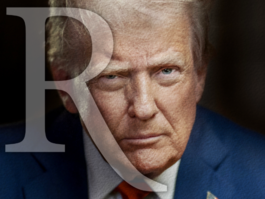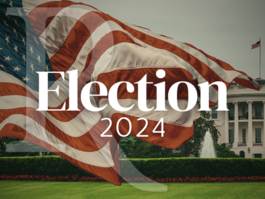Election 2024: Harris +1 in New Hampshire, +3 in Minnesota
Vice President Kamala Harris has a three-point lead over former President Donald Trump in Minnesota, but the presidential contest is nearly tied in New Hampshire.
A new telephone and online survey by Rasmussen Reports and American Thinker finds that, if the election were held today, 48% of Likely New Hampshire voters would vote for Harris, while 47% would vote for former Trump. Three percent (3%) say they would vote for some other candidate, while another two percent (2%) are still undecided. In 2020, President Joe Biden beat Trump by a nearly eight-point margin in New Hampshire. (To see survey question wording, click here.)
Meanwhile, in Minnesota – home state of Harris’s vice-presidential running mate Gov. Tim Walz, Harris now leads by a three-point margin, with 50% to Trump’s 47%. Two percent (2%) would vote for some other candidate and another two percent (2%) are undecided.
(Not getting our eNewsletter? Sign up HERE. Already signed up? Try adding updates@rasmussenreports.com to your contacts or whitelisting us. Still having trouble – email subscriptions@rasmussenreports.com. If it's in the news, it's in our polls).
Rasmussen Reports updates are also available on Twitter or Facebook.
The survey of 901 New Hampshire Likely Voters was conducted on October 24-28, and the survey of 959 Minnesota Likely Voters was conducted on October 24-26, 2024, by Rasmussen Reports and American Thinker. The margin of sampling error is +/- 3 percentage points with a 95% level of confidence. Field work for all Rasmussen Reports surveys is conducted by Pulse Opinion Research, LLC. See methodology.
“Past American Thinker/Rasmussen Reports polls have looked at swing states and either red or purple states,” said American Thinker managing editor Andrea Widburg. “Today’s polls, though, look at two true blue states. In the past 12 elections, Minnesota has only voted for Democrat presidential candidates, and, except for 2000, New Hampshire has voted for the Democrat in every election since 1992. Both states share similar concerns seen in other states, but their reactions to those concerns are unexpected and unpredictable.”
Voters in both states rank the three most important issues in the same order, with the economy at the top of the list (ranked first by 31% in Minnesota and 27% in New Hampshire), followed by border security (19% in Minnesota, 17% in New Hampshire) and abortion (13% in Minnesota, 14% in New Hampshire). Significantly more voters in New Hampshire (11%) than Minnesota (6%) consider climate change the most important issue in the election.
Among other findings of the Rasmussen Reports/American Thinker survey of New Hampshire and Minnesota voters:
– Minnesota Sen. Amy Klobuchar leads by an 11-point margin in her reelection campaign, with 51% to Republican challenger Royce White’s 40%. Four percent (4%) of Minnesota voters would vote for another candidate in the Senate race, while five percent (5%) remain undecided.
– There is a dead heat in New Hampshire’s gubernatorial election to fill the seat vacated by Republican Gov. Chris Sununu’s decision not to seek a fifth term in office. Former Republican Sen. Kelly Ayotte and Manchester’s Democratic Mayor Joyce Craig each get 44%, with six percent (6%) of New Hampshire voters saying they’ll vote for some other candidate and another six percent (6%) undecided.
– In the battle to control the U.S. House of Representatives, Republicans have a slight edge on the so-called “generic ballot” question in Minnesota, while Democrats have a larger advantage in New Hampshire. In Minnesota, 48% would vote for Republican congressional candidates and 47% would vote for Democrats. In New Hampshire, 46% would vote for Democrats and 41% for Republicans.
– The “gender gap” for the presidential election is wider in Minnesota than in New Hampshire. Harris leads by 15 points (56% to Trump’s 41%) among women voters in Minnesota, where Trump leads among men by 11 points (54% to Harris’s 43%). In New Hampshire, Trump leads among men by a seven-point margin (51% to Harris’s 44%), while Harris has a nine-point advantage among women voters, with 52% to Trump’s 43%.
– In Minnesota, 51% of both white and black voters, 28% of Hispanics and 53% of other minorities would vote for Harris, while 46% of both white and black voters, 72% of Hispanics and 44% of other minorities would vote for Trump.
– In New Hampshire, 50% of whites, 26% of black voters, 33% of Hispanics and 42% of other minorities would vote for Harris, while 45% of whites, 74% of black voters, 64% of Hispanics and 58% of other minorities would vote for Trump.
Voters overwhelmingly think this year’s presidential election is important, and most will be angry if their candidate doesn’t win.
More than three months after she was appointed to be the Democratic Party’s presidential candidate, Harris remains “underwater” in her favorability ratings.
Additional information from this survey and a full demographic breakdown are available to the public as well as to Platinum Members.
Additional information from this survey and a full demographic breakdown are available to the public as well as to Platinum Members.
Please sign up for the Rasmussen Reports daily e-mail update (it’s free) or follow us on Facebook. Let us keep you up to date with the latest public opinion news.
The survey of 901 New Hampshire Likely Voters was conducted on October 24-28, and the survey of 959 Minnesota Likely Voters was conducted on October 24-26, 2024, 2024, by Rasmussen Reports and American Thinker. The margin of sampling error is +/- 3 percentage points with a 95% level of confidence. Field work for all Rasmussen Reports surveys is conducted by Pulse Opinion Research.
Rasmussen Reports is a media company specializing in the collection, publication and distribution of public opinion information.
We conduct public opinion polls on a variety of topics to inform our audience on events in the news and other topics of interest. To ensure editorial control and independence, we pay for the polls ourselves and generate revenue through the sale of subscriptions, sponsorships, and advertising. Nightly polling on politics, business and lifestyle topics provides the content to update the Rasmussen Reports web site many times each day. If it's in the news, it's in our polls. Additionally, the data drives a daily update newsletter and various media outlets across the country.
Some information, including the Rasmussen Reports daily Presidential Tracking Poll and commentaries are available for free to the general public. Subscriptions are available for $4.95 a month or 34.95 a year that provide subscribers with exclusive access to more than 20 stories per week on upcoming elections, consumer confidence, and issues that affect us all. For those who are really into the numbers, Platinum Members can review demographic crosstabs and a full history of our data.
To learn more about our methodology, click here.





